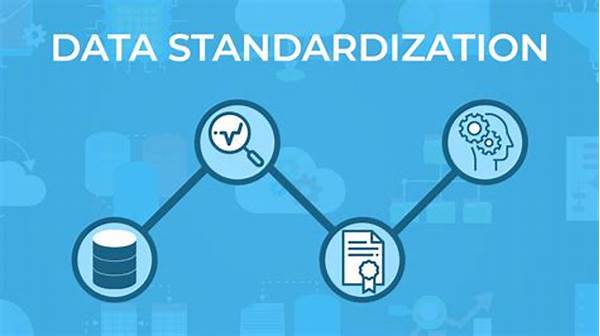In an era where information serves as the backbone of decision-making processes, the significance of gathering accurate and reliable data cannot be overemphasized. Standardizing data collection methods is a fundamental aspect in ensuring consistency, reliability, and accuracy within any data-driven framework. By employing standardized methods, organizations can align their data collection processes across different sectors and regions, thereby facilitating meaningful comparisons and analyses. The need for consistency in data collection arises from the diverse sources and varied formats that data can be obtained, making it imperative to adopt standardized procedures.
The Importance of Standardizing Data Collection Methods
Standardizing data collection methods provides a unified approach that serves to streamline data acquisition processes. With standardized methods, data collected from various sources can be structured uniformly, significantly enhancing its comparability and simplifying the analytical processes involved. Such standardization is critical for fostering collaboration among different stakeholders who might otherwise face challenges in interpreting, integrating, or comparing disparate data sets. In the absence of standardized methods, organizations risk having inconsistencies and errors, which can lead to erroneous conclusions and misguided decisions. The overarching goal of standardizing data collection methods is to promote data integrity, minimize errors, and facilitate more accurate and reliable analyses.
Fundamentally, standardizing data collection methods equips organizations with a robust framework that helps ensure all data collected adhere to predetermined norms and criteria. This uniform approach is critical in yielding data quality that is both reliable and valid, regardless of the operational scope or geographical context of the organization. By adopting a standardized strategy, entities can effectively reduce variability and improve data processing efficiencies. Moreover, such standardization typically results in enhanced data documentation and archiving processes, which are crucial for future reference and auditing.
Key Components of Standardizing Data Collection Methods
1. Uniform Data Definitions: Establishing clear and precise definitions for all data elements ensures consistency across different collection processes.
2. Consistent Tools and Technologies: Implementing uniform tools for data collection minimizes discrepancies and facilitates seamless integration.
3. Comprehensive Training Programs: Providing extensive training ensures all personnel understand and implement standardized data collection methods effectively.
4. Procedural Guidelines: Detailed guidelines serve as a reference for maintaining consistency and accuracy in data collection efforts.
5. Continuous Monitoring and Evaluation: Regular assessments are essential to ensure adherence to standardization and to improve upon existing methods.
Challenges in Standardizing Data Collection Methods
Standardizing data collection methods is not devoid of challenges. One of the primary hurdles is obtaining consensus among diverse stakeholders on the standards to be adopted. Varying interests and objectives may lead to disagreements, making the standardization process complex and time-consuming. Furthermore, the implementation of standardized processes may encounter resistance from individuals accustomed to established practices. Moreover, organizations may face difficulties in adapting standardized approaches due to technological constraints, especially in regions with limited access to modern tools and infrastructure.
Overcoming these challenges requires strategic planning and collaboration between all involved parties. Engagement with stakeholders to understand their perspectives and address their concerns is crucial in achieving consensus. Additionally, investing in the appropriate technology and providing adequate training can facilitate a smoother transition to standardized methods. Fostering a culture of continuous improvement and openness to new methodologies is essential in minimizing resistance and enhancing the acceptance of standardized data collection methods.
Benefits of Standardizing Data Collection Methods
1. Enhanced Data Quality: Standardization leads to more accurate, reliable, and valid data collection.
2. Improved Efficiency: Uniform procedures streamline the data collection process, saving time and resources.
3. Facilitated Data Sharing: Consistent data formats enable easier sharing and integration of datasets across platforms.
4. Consistency in Analysis: Comparable datasets allow for uniform analysis, leading to more coherent conclusions.
5. Increased Collaboration: Standardization fosters an environment conducive to stakeholder collaboration.
6. Better Decision Making: Accurate and consistent data provide a solid foundation for effective decision-making.
7. Regulatory Compliance: Standardized data collection aids in meeting data governance and compliance requirements.
8. Reduced Errors: Standardization minimizes variability and the potential for data collection errors.
9. Efficient Training: Uniform guidelines simplify training processes for data collection personnel.
10. Future-Proofing: Standardization prepares organizations for future advancements in data technologies.
Implementing Standardized Data Collection Methods
The implementation of standardized data collection methods is a structured process that requires meticulous planning and consideration of several factors. Organizations need to conduct a comprehensive assessment of existing data collection practices and identify areas where standardization could be beneficial. This assessment serves as a foundation for developing standardized procedures tailored to the organization’s specific needs and objectives. Furthermore, the adoption of standardized tools and technologies is necessary to support these new methods effectively. Training programs must be instituted to ensure all personnel can implement the standardized methods proficiently, thereby minimizing errors and inconsistencies.
Continuous monitoring and evaluation are integral parts of the implementation process. Regular reviews and assessments help identify any deviations from standard practices and provide opportunities for improvement. Feedback from personnel involved in data collection is invaluable in refining and enhancing standardized methods. Additionally, fostering a culture that values data accuracy and consistency encourages adherence to standardized procedures. By implementing and continuously refining standardized data collection methods, organizations can ensure the quality and reliability of their data, ultimately facilitating informed decision-making and strategic planning.
Conclusion
In conclusion, the initiative of standardizing data collection methods plays a pivotal role in achieving consistency, accuracy, and reliability of data. While challenges in implementation exist, strategic planning and stakeholder collaboration are instrumental in overcoming these obstacles. The standardization process offers numerous benefits, including enhanced data quality, improved efficiency, and better decision-making capabilities.
Ultimately, the successful implementation of standardized data collection methods hinges on a commitment to continuous improvement and adaptation. Organizations must invest in the necessary tools, training, and monitoring systems to support these methodologies effectively. By prioritizing standardization, organizations can ensure the integrity and utility of their data, driving improved outcomes and fostering a data-driven culture.





